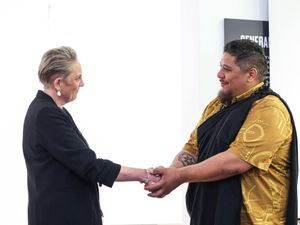Fewer 18-year-olds from UK apply to most selective universities and courses
The number of applicants for medicine courses has fallen to the lowest point since 2020, Ucas figures show.

The number of British teenagers applying for a place at the most selective universities and courses has fallen compared to last year, figures have shown.
The university admissions service has published data for its early application deadline for 2025 courses – which includes applications for degrees at Oxford and Cambridge, as well as medicine, dentistry and veterinary courses.
A total of 38,940 18-year-olds from the UK have applied for a place on such undergraduate courses by the October 15 deadline – down 0.9% on the same point last year, according to the latest data from Ucas.
The number of applicants for medicine courses has fallen by 3.3% compared to last year – and dropping to the lowest number since 2020.
More people applied to study healthcare courses during the pandemic, but the number of medicine applicants has been declining over the past three years.
There were 23,350 applicants to medicine courses this year compared to 24,150 last year, the data has shown.
Ucas said the fall can be mainly attributed to a decline in the number of UK 18-year-olds applying for medicine, with 11,300 applicants compared to 11,750 at the same point last year.
The figures come as university leaders have repeatedly warned of significant financial concerns as a result of frozen tuition fees paid by domestic undergraduate students and a fall in the number of international students.
On Monday, Education Secretary Bridget Phillipson announced that undergraduate tuition fees in England – which have been frozen at £9,250 since 2017 – would rise to £9,535 next year, and maintenance loans would also rise in line with inflation to help students with living costs.
The announcement was made after the early Ucas deadline, but it came ahead of the main application deadline for all other courses which is January 29.
The Ucas figures also show that the number of 18-year-olds applicants from the most disadvantaged backgrounds remains the same as last year.
Overall, there has been a 1.3% rise in applicants – of all ages and domiciles – to early deadline courses compared to last year.
There have been 73,720 applicants this year, compared to 72,740 at the same point last year, the Ucas figures have shown.
There has also been a 4.7% increase in international undergraduate applicants through Ucas, from 20,850 last year to 21,830 this year.
China is the largest source market for international applicants, with 4,970 applicants for early deadline courses compared to 4,340 last year – a 14% rise.
Jo Saxton, chief executive at Ucas, said: “It’s welcome news to see that global confidence in the UK’s higher education sector remains strong, with an increase in international undergraduate applicants to UK universities and colleges for early deadline courses.”
She added: “I’m pleased to see an increase in applications for early deadline courses compared to last year, especially among mature students.
“Medicine remains a competitive subject with many more applications than available places, even with the decline in applicants seen in recent years, following the peak demand during the pandemic.”
On the drop in 18-year-old applicants from the UK, Nick Hillman, director of the Higher Education Policy Institute (Hepi) think tank, told the PA news agency: “This is important data because it suggests the recent downturn in demand for higher education is a trend, rather than just a blip.”
He added: “It also suggests that this week’s modest increase in maintenance support and the pleas from ministers for universities to do more on access will not be enough to arrest the decline.”
Dr Latifa Patel, representative body chair and workforce lead of the British Medical Association (BMA), said: “While medical school places remain competitive, it’s concerning that we are seeing fewer people applying – especially at a time when the Government’s ambition, and NHS’s need, is to increase the number of doctors in our medical workforce.”
She added: “Prospective medical students have witnessed how the profession has been treated in recent years, they’ve heard of the spiralling workload, widespread burnout and the onerous fight for fairer pay.
“With a range of other attractive career paths available in Stem, it’s no wonder medicine is losing potential talent amongst its traditional applicant pool.”
A spokesperson for Universities UK (UUK) said: “These figures are for the October deadline – so only a proportion of applicants are represented and it’s too early to tell what will happen to the overall 18-year-old application rate.
“It’s good to see early signs of growth in applications from mature learners and international applicants – although again this only represents the subset of international applicants who study at undergraduate level.”





